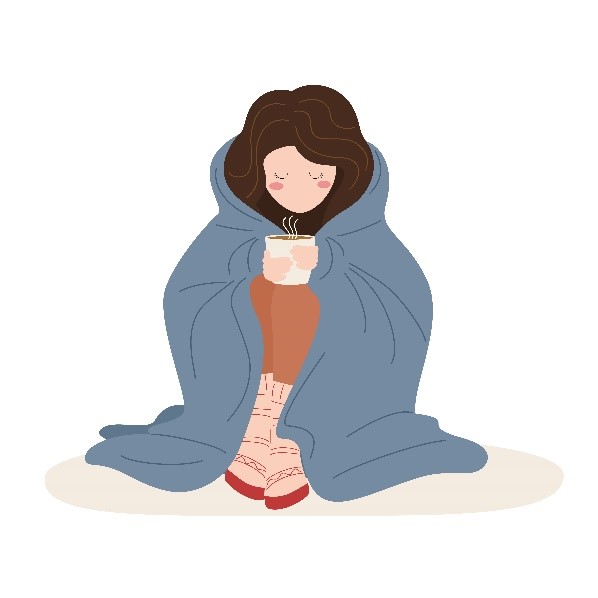
Clinically, when exposed to windy, rainy days or certain environments where the temperature suddenly drops, people experience soreness in their muscles, joints, and even limbs activities are also affected, as if the body has a built-in weather forecasting system that can reliably predict the wind, rain, and low temperature climate every time. The elderly will claim that “rheumatism” is to blame for the pain and discomfort in these joints. Consequently, a lot of people mistakenly believe they have arthritis.
Understanding arthritis in Western Medicine


Joint discomfort is not the same as arthritis; rather, arthritis is an inflammation of the joints and the ligaments, soft tissues, and other structures that surround them, as well as joint redness, pain, reduced movement, and dysfunction.
There are various varieties of arthritis; let’s first quickly go over the three most prevalent types.
1. Osteoarthritis

Osteoarthritis, as its name suggests, is brought on by aging and joint damage and affects many people over the age of 50. The knee and hip are the joints most likely to develop osteoarthritis.
Typical symptoms: unilateral joint discomfort, severe joint pain when squatting or climbing stairs, joint stiffness that may be felt when waking up in the morning, and stiffness that decreases after activity but makes pain aggravate with excessive activity.
2. Post-streptococcal arthritis

The majority of arthritis is caused by bacteria in the upper respiratory tract (haemolytic streptococcus), and most of those affected are children and teenagers. Post-streptococcal arthritis can affect big joints such as shoulders, elbows, knees, and ankles.
Typical symptoms: simultaneous injury to numerous joints, or transfer from one joint to another (migratory nature), acute pain but minimal joint swelling, and recovery of joint function after the onset of arthritis symptoms without deformity.
3. Rheumatoid arthritis

It is brought on by one’s own immune attacking one’s own joints, and is frequently experienced by women. Small joints, particularly the fingers, are more susceptible to rheumatoid arthritis invasion.
Typical symptoms: symmetrical onset of bilateral joints, stiffness in the morning after waking up, inability to move the hands freely, and some will also experience finger joint pain. Later, slowly affecting other small joints, late stage will also result in finger joint deformation and dysfunction.
TCM‘Rheumatism’

In Chinese medicine, rheumatism refers to joints that do not appear injured or inflamed, yet experience pain on rainy days ; this form of joint pain is known as Bi Syndrome. The word bi means “occlusion.”
From the perspective of Chinese medicine, the factors that cause people to become ill can be classified into two categories: experiencing external evil qi and internal disorders. TCM defines rheumatism as “wind” and “dampness” entering the body. Because most rheumatism manifests as cold, this three evil Qi are coupled to make the disease windy, cold, and dampness.

Windy is the wind of nature, with the qualities of flowability, will unintentionally invades our body, bringing harm not only on its own, but also likes to collaborate with other evil qi to hurt our body.
Dampness is a liquid in our bodies that is denser than water, and because it is difficult to flow, it tends to accumulate in specific areas, particularly the joints. Dampness builds in the body, beginning with the skin and progressing to the muscles, bones, joints, the exterior of blood vessels, the inside of blood vessels, and lastly the internal organs. Each invasion of a part will have a different presentation.
When dampness builds up in our joints, the wind enters the body, combined with the cold factor, the muscles and joints contract and stiffen, causing the qi and blood to flow in these areas unevenly. The movement of the joints will also be restricted, resulting in pain, soreness, numbness, and heaviness.

Shoulders, neck, knees, and ankles are the joints most affected by wind, cold, and dampness. The majority of the shoulders, neck, and knees will lack warmth due to exposure, and they will be susceptible to cold after being exposed to wind or rain; The ankle is because it is used so frequently in daily activities, and after being exposed to wind and cold, the circulation of qi and blood is affected leading to blockage of the local circulation, resulting in pain.
How is rheumatism developed?

1. After a while of being out in the sun, the pores were opened, and cooling under the air conditioner will cause the sweat that hasn’t dried to be trapped under the skin.

2. After taking a bath, failing to immediately dry the body and walking outside into the wind allowed water vapour from the bath to seep into the body through the pores, resulting in dampness.

3. Long-term consumption of cold food and drinks can harm the spleen and stomach, impair digestive function, restrict liquid transportation in the body, and aggravate dampness.
Prevention of rheumatism
Traditional Chinese medicine is people-oriented, prioritizes prevention and risk management. As a result, the three components listed below serve as a reference for joint protection.
1. Staying warm and avoiding cold

- Keep joints that are prone to wear and tear warm. Whenever a joint feels sore, apply warm water packs locally to the area.
- On hot days, stay away from cooling down with air conditioners and fans directly on joints.
- When it gets colder outside, dress warmly and cover your legs, navel, shoulders, and back.
2. Reasonable diet and weight management

- Long-term lack of weight control will increase the stress on joints, wear out joint surfaces, accelerate joint aging, and induce arthritis.
- Avoid extended weight bearing and bad posture to prevent aggravating joint injury.
3. Adapt the workout to your own abilities

- Exercise done properly can promote the release of synovial fluid in the joints, strengthen muscles and joints to reduce joint injury and wear.
- Exercise that is excessively strenuous or exceeds the body’s load can harm the body.
- One should evaluate and choose the type of exercise based on one’s own physical condition and pain level. If joint discomfort or pain has already developed, activity should not, as a general rule, make the pain worse.
- It is advised to perform workouts for about an hour each day, and should choose workouts that are slightly gentle and won’t injure the joints, such swimming, cycling, Tai Chi, etc.
此文章还有以下语言版本:
![]() 简体中文 (Chinese (Simplified))
简体中文 (Chinese (Simplified)) ![]() Melayu (Malay)
Melayu (Malay)



